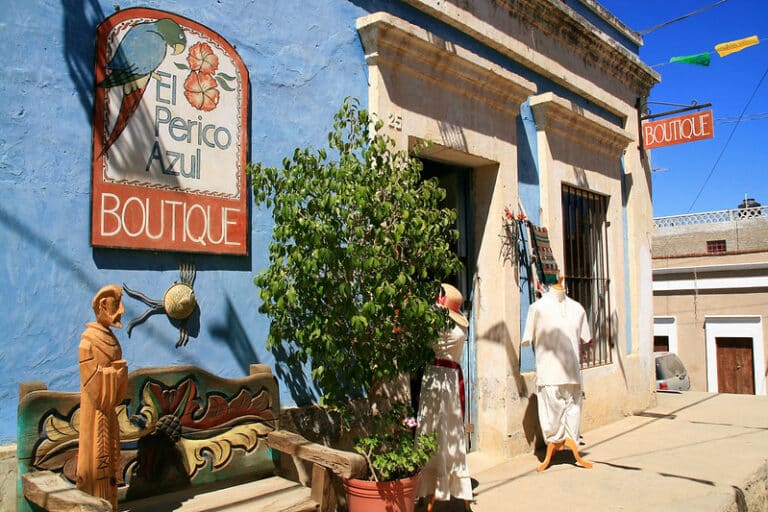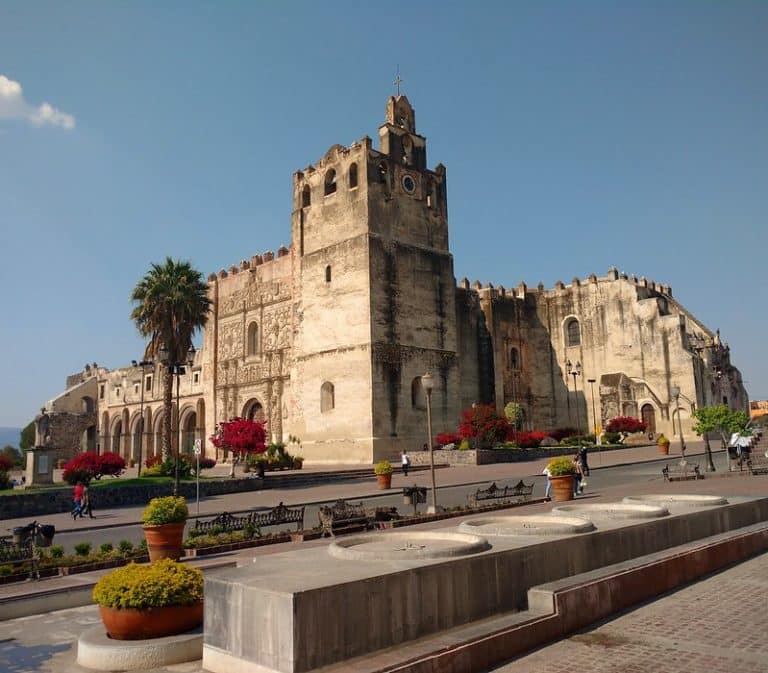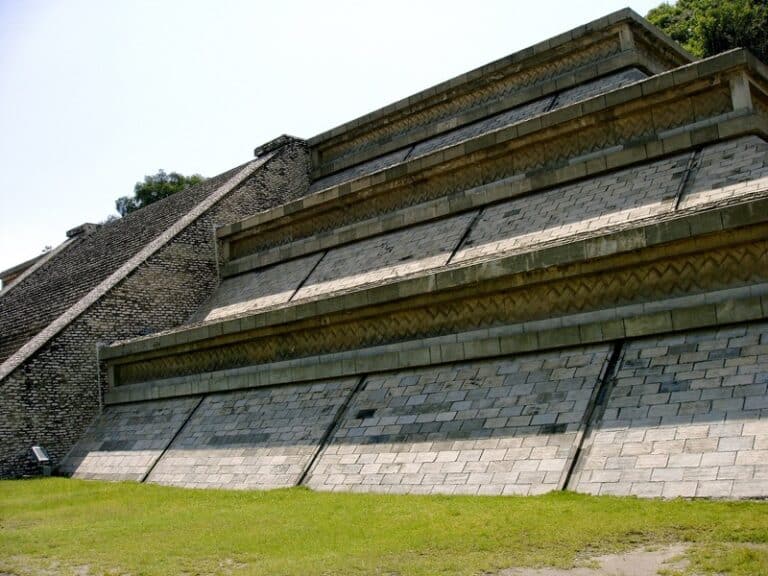Mitla, Oaxaca: Unearth the Magic of this Archaeological Gem

Mitla, Oaxaca: Unearth the Magic of this Archaeological Gem
The Magical Town of Mitla Oaxaca has impressive archaeological wealth and other great attractions I would like to share with you today.
Mitla’s history dates back to the Aztecs, who called it “Mictlán,” which means “Valley of the Dead.”
After the Spanish conquest, evangelists built the first temple in the middle of the 16th century to honor the Apostle of the Gentiles, and the town adopted the name of San Pablo Villa Mitla.
Fortunately, many of the constructions erected by Mixtecs and Zapotecs survived the cultural imposition and use of “quarry” materials.
In 2014, San Pablo Villa Mitla, or simply Mitla, was incorporated into the system of Magical Towns to promote the tourist use of its significant archaeological site and its architectural and natural beauties.
How do you get to Mitla from Oaxaca City?
Oaxaca City is only 44 km from Mitla by road.
The municipal entity belongs to the Tlacolula District of the Central Valleys.
These valleys comprise three large river valleys delimited by the Mixteco Knot, the Sierra Juarez, and the Sierra Madre del Sur.
Top things to do and see in Mitla Oaxaca
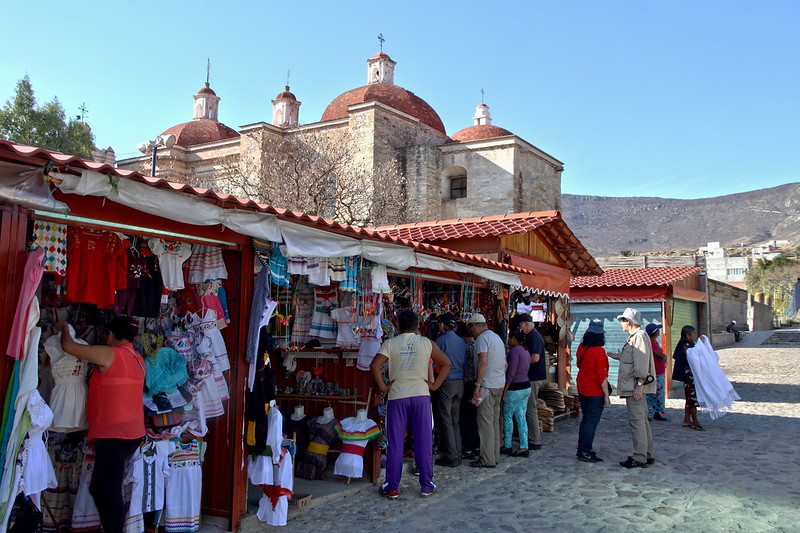
Of course, the main attraction of Mitla is its majestic archaeological site, an actual testimony of the Zapotec and Mixtec civilizations.
In the middle of the archaeological site, with a pre-Columbian platform as its atrium, is the Church of San Pablo, built over the pre-Hispanic monuments as a symbol of Christian cultural dominion.
The beautiful Municipal Palace is another building worthy of admiration in the town.
Near Mitla Oaxaca are the petrified waterfalls of Hierve el Agua, a beautiful natural wonder.
Mitla also awaits you with its delicious moles, chocolates, and mezcals, the gastronomic signature of the state.
Explore the Mitla ruins
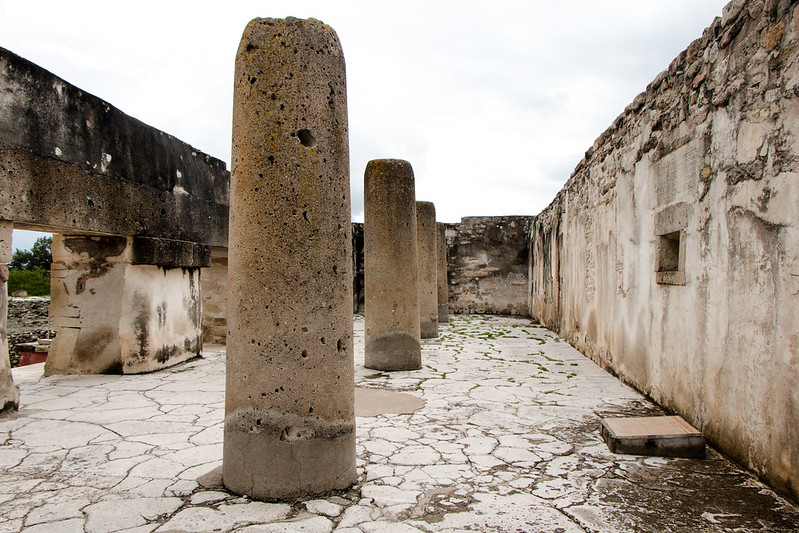
The Zapotec-Mixtec archaeological site of Mitla is the most visited archaeological site in Oaxaca, after Monte Alban.
Five monumental architectural complexes form the site:
- Grupo del Norte
- Grupo de las Columnas
- Grupo del Arroyo
- Grupo del Adobe, also known as Grupo del Calvario
- Grupo del Sur
The last two groups are the oldest, reproducing the traditional design of plazas surrounded by buildings, as in Monte Alban.
A construction called La Fortaleza, a Zapotec “fort” to protect against hostile ethnic groups is separated to the west of the archaeological city.
Its construction employed the best talents in science and arts.
Of all the sites, the most splendid is the Group of Columns, distinguished by using these structures as supporting and decorative elements.
The palace in this group shows an artistic and delicate use of fretwork as ornamental components in the friezes of facades and walls.
The Group of Columns was estimated to be erected between the fourteenth and fifteenth centuries.
Other components of the Group of Columns are its three quadrangles, unfortunately, were damaged in the sixteenth century when they were stripped of their materials to build the temple of San Pablo.
Admire the Church of San Pablo
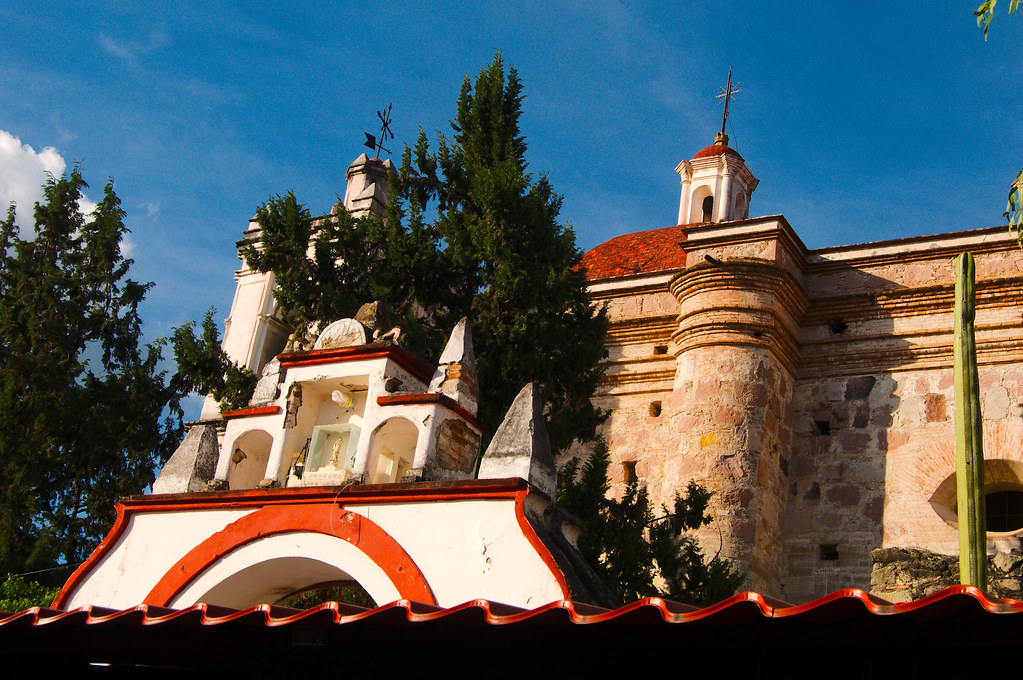
This temple is located inside the archaeological zone of Mitla Oaxaca and was erected on a pre-Hispanic platform that currently serves as an atrium.
The temple was built in 1543 over a Zapotec religious complex and had four domes, three octagonal in the closed naves and a circular one that closes the apse.
Inside the church, there are several religious sculptures.
One of the octagonal domes encloses the sanctuary and another the choir.
The front of the particular church is ornamented with pyramidal crests, and it is still possible to admire the Zapotec mosaic fretwork in the south wall of the atrium.
Visit the Municipal Palace of Mitla Oaxaca
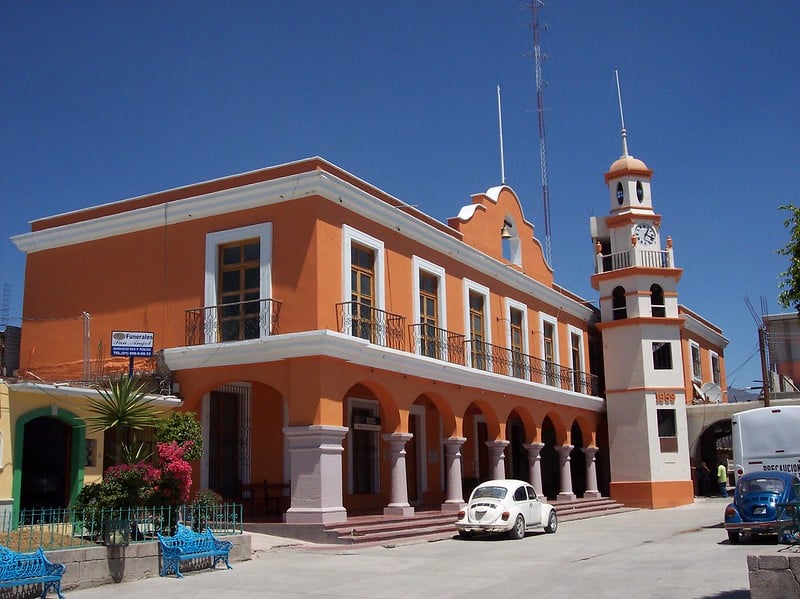
The Municipal Presidency of Mitla is housed in an attractive two-story building with a tower and belfry.
On the first floor is a long portal with a succession of semicircular arches supported by sober columns, while a row of balconies distinguishes the upper floor.
In front of the structure, there is a tower of five levels, the last one ending in a small dome.
The fourth part of the tower has a clock and a handrail.
In the center of the belfry that crowns the building, there is an opening with a bell.
Explore the Mitla Museum
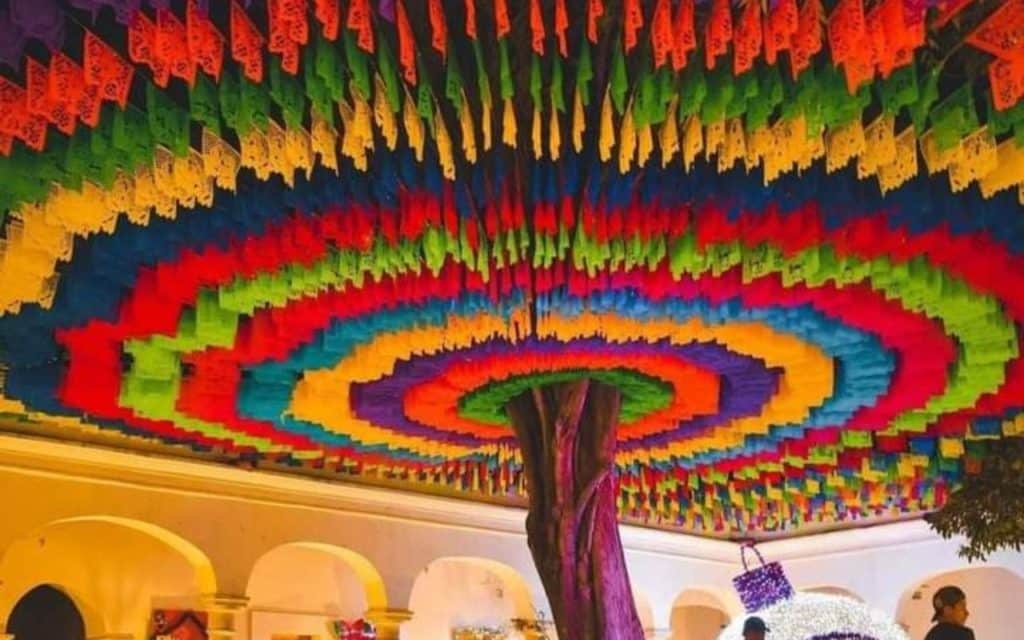
In the 1960s, American Edwin Robert Frissell acquired a spacious building in Mitla, where he installed his vast collection of archaeological pieces.
The site has been known ever since as the Frissell Museum.
Later, the collector Howard Leigh decided to take the Frissell Museum’s incredible collection of Zapotec objects in Oaxaca, with an estimated 35,000 and 75,000 pieces, the largest in the country.
After Frissell’s death, the property passed to other owners, the exhibition was closed, and a veil of mystery began to be woven over the location of many “lost” pieces.
Part of it is known to own the Mexican National Institute of Anthropology and History.
In the meantime, Mitla is waiting for the reopening of its museum, which would give it a significant boost in tourism.
Hopefully, it will be open by the time you get to Mitla.
Go to Hierve el Agua, Oaxaca
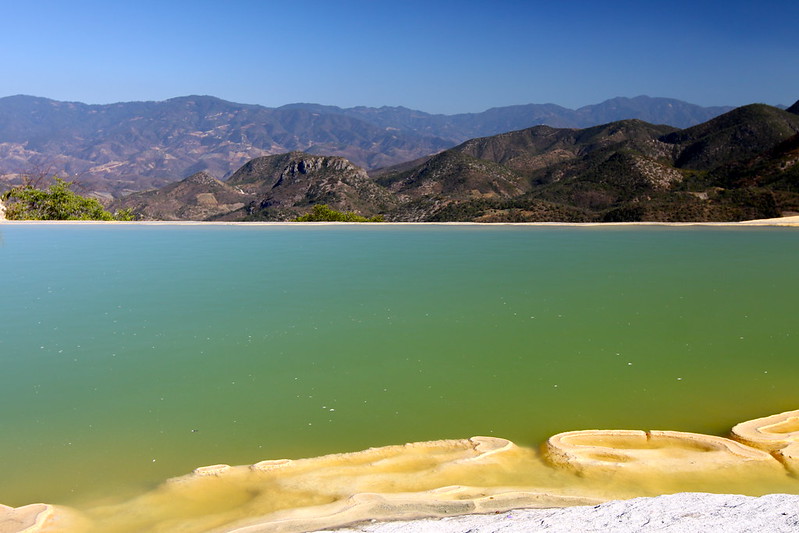
Sixteen km from San Pablo Villa Mitla is the community of San Isidro Roaguía, where the petrified waterfalls of Hierve el Agua are located, a natural wonder millions of years old.
From a distance, it looks like a waterfall that remains static due to a prodigious action.
At the site, there is a 2,400-year-old Zapotec irrigation and terracing system.
There are particles of calcium carbonate contained in the water gathered through the millennia, in the same way as in the stalactites and stalagmites.
The spring that formed the stony waterfalls also developed a large natural pool that fortunately did not petrify and is now a thermal spa.
Get some souvenirs
Many of the town’s historic district houses are also weaving and embroidery workshops made by skilled local artisans.
The wide variety of textile handicrafts includes typical clothing, handmade embroidery, and household utensils, such as rugs, bags, serapes, hammocks, and tablecloths.
They also make bracelets and necklaces with natural fibers, small stones, and seeds.
Many of the motifs of the weavings are inspired by Zapotec mythology and come from pre-Hispanic codices, although there are also pieces with contemporary designs.
A handicrafts market in front of the archaeological zone offers these beautiful souvenirs.
Try the food!
Oaxacans of the Central Valleys are the best at making moles, and Mitla Oaxaca honors the tradition of consuming and offering them in all colors, primarily black.
Another traditional dish is liver with eggs. To drink, they make hot chocolate, a warm caress on cold days, which they prepare with water (not milk).
The local alcoholic beverage is mezcal, natural, or flavored with fruits called “creams.”
The small town of Matatlán, 6 km from Mitla, has so many mezcal palenques that the community is called the “mezcal capital of the world.”
Mitla’s main festivals
The patron saint festivities in honor of San Pablo are celebrated in January.
For the occasion, the temple, its pre-Hispanic atrium, and the surrounding streets are filled with townspeople and pilgrims from nearby towns and neighboring municipalities.
The grand procession with the image of the patron saint begins with its apotheosis departure from the temple in the archaeological zone, continuing through the nearby cemetery and ending in the center of town.
During the procession, many of the attendees drink complimentary “mezcalitos.”
The religious procession is enlivened by musical bands, groups in traditional costumes, and giant fantasy figures specially built for the festivity.
Are there hotels in Mitla Oaxaca?
Mitla, Oaxaca, is still developing more tourist services, and for now, the lodging infrastructure in the town itself is limited.
One of the main places to stay is Hotel Restaurant Don Cenobio, located in downtown Mitla, which has a reputation for being comfortable and clean.
Other lodging options exist on the outskirts of town if no rooms are available. Keep in mind that Oaxaca City is just 44 km away.

